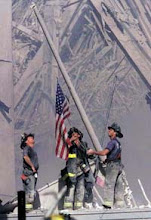Iran - Nuclear Pariah
Background:
Iran’s nuclear program is not new. Lest some think that this program, and our reaction to it, is another Bush administration exaggeration, think again. The program began in the Shah’s era, and included a plan to build 20 nuclear power reactors. Construction actually began on two reactors at Bushehr situated on the Persian Gulf. They were never finished. In fact they were bombed by the Iraqis during the Iran-Iraq war. Additionally, a research and development program to produce fissable materials was initiated. These efforts were halted during the Iranian revolution and the Iran-Iraq war.
Work on these reactors was resumed after the 1979 revolution in Iran, but was not given the importance that it has today. The current nuclear program is headed by the President, the commander of the Iranian Revolutionary Guard Corps (IRGC), the head of the Defense Industries Organization, and the head of Iran's Atomic Energy Organization (IAEO). These leaders continue the pursuit of WMD's and support Chemical, Biological, and Nuclear programs against all pressures from the United States and its allies. Iran ratified the Nuclear Nonproliferation Treaty (NPT) in 1970, and since February 1992 has allowed the IAEA to inspect its nuclear facilities. Prior to 2003 no IAEA inspections had revealed Tehran's violations of the NPT. The meaninglessness of this action is discussed below.
Note: Much more information is available about Iran’s nuclear program at http://www.globalsecurity.org.
What are Iran’s goals in this area? That is not terribly hard to discern. From materials available from IEAE reports, and from groups inside of Iran the following has been pieced together. Much of what is written below is excerpted from remarks made at the Hudson Institute by then Undersecretary of State, John Bolton, and may be accessed at http://www.state.gov/t/us/rm/35281.htm.
Iran is pursuing two separate paths to nuclear weapons: The first is enriched uranium and the second is plutonium. These are described briefly below.
UraniumIran has tried to develop two different uranium-enrichment methods in order to produce weapons-grade uranium. It has established a number of facilities for the manufacture and testing of centrifuges. These include a pilot enrichment facility designed for 1,000 centrifuges, and a large buried facility intended to house up to 50,000 centrifuges. Enrichment of at least 1.2% was obtained using centrifuges. In parallel, Iran has pursued another program to enrich uranium with lasers. Up to 15% enrichment was attained using laser methods.
Both of these programs were successfully concealed from IAEA inspectors in Iran for years until an Iranian opposition group disclosed their existence.
Plutonium
The alternate avenue to weapons is Plutonium production, and Iran is pursuing two avenues in this regard. The first is the covert construction of a large, heavy water production plant that would supply heavy water for a research reactor has been disclosed by an Iranian opposition group. As noted by Under Secretary Bolton,
“The technical characteristics of this heavy water moderated research reactor are optimal for the production of weapons-grade plutonium. Iran claims the purpose of the reactor is for isotope production for civil purposes, a claim that belies Iran’s confirmed past interest in building hot cells at the heavy water reactor that appear to be designed for plutonium separation.”
The Bushehr light-water power reactor is the second path and may be another source of weapons grade plutonium. That reactor is under IAEA safeguards. Russia has agreed to provide all fresh fuel for that reactor, and Iran and Russia are discussing an agreement to return all spent fuel to Russia. The Russian proposal, backed by the Europeans and the United States, is aimed at pursuading Iran to move the enrichment of uranium completely out of Iran’s territory to ensure that its nuclear program cannot produce weapons. Enrichment can produce either fuel for a nuclear reactor or the material needed for a warhead.
A top Russian delegation held talks with Iranian officials about the Russian proposal. A Russian television source quoted the spokesman for Iran's Supreme National Security Council, Hossein Entezami, as saying. "The two sides are expected to discuss the Russian proposal about joint uranium enrichment (in Russia) and also uranium enrichment in Iran. “
Tehran says its nuclear program is for electricity generation, despite U.S. and European Union concerns that it is moving to produce nuclear bombs. EU foreign and security affairs chief Javier Solana recently told Iran that it may doom further negotiations with the EU about economic aid and other issues if it resumes uranium enrichment.
Iran informed the IAEA Tuesday that it has decided to resume research into nuclear fuel production, a step that has only increased concerns in the West that Iran is moving toward production of nuclear weapons. This concern increreased when Iran removed the seals from its nuclear facilities on January 9th 2006. If Iran should withdraw from the Nonproliferation Treaty ("NPT") and renounce this agreement with Russia, the Bushehr reactor would produce enough plutonium each year for about 30 nuclear weapons. This is indeed worrisome given the current leaders of Iran.
The Europeans are hoping the compromise would foster a breakthrough in deadlocked negotiations aimed at ensuring Iran cannot produce nuclear weapons. Talks between Iran and Britain, France and Germany, which resumed last month, have made little progress, but are to continue later this month. As of January 13, 2006, Iran refuses to modify its nuclear program and has threatened that it will not allow inspectors into the country. On this date Iran threatened to block inspections of its nuclear sites if confronted by the U.N. Security Council because of its atomic activities. The hard-line president reaffirmed his country's intention to produce nuclear energy.
To be Continued.....
January 13, 2006



0 Comments:
Post a Comment
<< Home